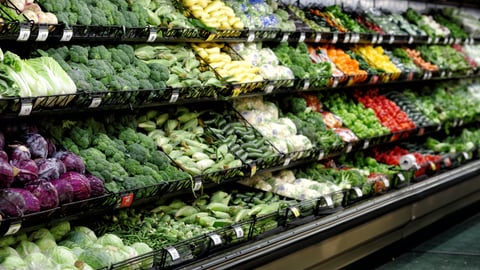How retailers and producers can boost meat sales
Meat is bearing the brunt of consumer concern over rising grocery costs, particularly after a photo of a $37 pack of chicken breasts went viral earlier this year. The photo was actually of a premium product, but the fact it wasn’t clearly identified as such underscored just how important proper merchandising can be at a time when consumers are increasingly anxious about rising costs.
Michael Young, president of Canada Beef, says winning over customers who are potentially skeptical about rising food prices is a merchandising challenge for both retailers and meat producers.
Grocery shopping is a chore, but whatever we can do as retailers to make it less of a chore or an enjoyable or even fun process, that’s a success,” adds Dave Meli, director of meat, seafood, and deli with Toronto’s Summerhill Market. “Making the process enjoyable for the consumer is what we strive to do.”
Merchandising can be a key tool in grocers’ arsenals, he adds. “It’s all part of the retail game.” Canadian Grocer spoke with analysts, grocers, marketers and meat processors and asked them for tips on how to merchandise meat. Here’s what they told us.
Do some prep work
Summerhill Market’s Meli says his store is featuring more meat products for which all the necessary prep work – such as cutting, trimming, marinating, etc. – is done.
Since the beginning of the year, for example, Summerhill has been featuring an oven-ready pork butt that comes pre-seasoned and with easy-to-follow cooking instructions.
Removing the chore of prep work has big appeal for home cooks. “People don’t want to follow 15 steps [to cook it],” he adds. “We’ve basically said, ‘Set your oven temperature to 325 degrees, stick it in for two-and-a-half hours, pull it out and enjoy,’ and people are like ‘Right on!’”
Meli says between 50% to 60% of Summerhill’s fresh meat offerings are already prepared for customers. The store may have one SKU of boneless, skinless chicken breast, for example, and as many as nine SKUs prepared with different marinades.
“There are people who want to cook, and [who] are going to buy a raw piece of meat that they can put all of that effort into,” explains Meli. “We’re trying to say, ‘We’re going to make it as easy as possible and have it prepared [for you].’”
Tell a story
Grass-Fed Piedmontese Beef from Alberta’s Peony Farms is exclusive to Italian Centre Shop. The beef comes from an Italian cattle breed that first came to Canada in 1980 and is known for its higher lean-to-fat ratio. Italian Centre Shop president Teresa Spinelli says customers are curious about the farmers that provide their beef, so the store uses in-store signage and brochures to tell stories about those farmers.
That approach also extends to providing information about the local family that butchers the beef, she says. “It’s really about education and telling stories so people understand what makes this beef different,” explains Spinelli.
The Italian Centre Shop complements that approach by ensuring its meat bunkers are always full and the meat itself isn’t squashed or discoloured, she says.
Feature more value cuts
Canada Beef’s Young says his organization is trying to encourage retailers to highlight “value cuts” from parts of the cow such as the hip and shoulder. “A lot of these cuts were quite popular years ago, and for whatever reason they weren’t being offered as much,” says Young. The downside is they can be more difficult for consumers to put together, which is why Canada Beef provides guides on how
More on-pack info
Lu Ann Williams, global insights manager for Innova Market Insights, says featuring nutritional information on packages can be a way to entice health-conscious consumers who may be on the fence when it comes to purchasing meat.
“With so much attention on nutrition and protein in particular, it might surprise consumers to really understand where meat stands versus other choices,” she says.
The concept of redefining value is a leading trend for Innova. “It’s important to understand what the consumer is willing to compromise on and what they won’t,” says Williams. “Labelling might be a way to highlight the nutritional value of meat.”
[Read more: “Consumers buying less fresh meat, looking to produce and dairy for alternatives”]
During Caddle’s 2023 Market Outlook webinar earlier this year, Dalhousie University professor Sylvain Charlebois said it was incumbent on grocers to ensure premium products – like the one that led to public anger earlier this year – are clearly identified on the label. “You may want to rework your labelling strategy as much as possible to showcase the value of your products,” he said.
This article was first featured in Canadian Grocer’s March/April 2023 issue.



